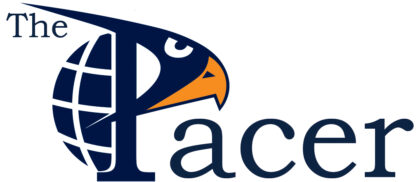On Feb. 11, UT Martin welcomed José Hernández as a keynote speaker for the 25th annual Civil Rights Conference.
Hernández was born in Stockton, California and was part of a family of migrant farmers living near the poverty line. This type of work led the family to live a nomadic lifestyle, and he spent his early years moving constantly between parts of California and Mexico. Their constant moving meant Hernández also moved between school districts, never staying at one school for longer than two months.
One of Hernández’s teachers saw how the family’s constant relocation presented a problem for his education: because of how often he switched schools, he could never properly root himself in a stable learning environment. The teacher gave his family the metaphor of an apple tree: if you plant a tree and move it to a new location every two months, the tree would be stunted and likely unable to produce fruit no matter how well it was being taken care of. After hearing the teacher’s reasoning, the family decided to permanently move to northern California.
So, how does someone go from being a migrant farmer living near the poverty line to dreaming of being a NASA astronaut? As a kid, Hernández watched the Apollo 17 moonwalk on television and was instantly fascinated. At that moment, he decided that he wanted to be an astronaut. When he told his dad about his newfound dream, his dad gave him a five-step recipe for success: define your goal, recognize how far you are from the goal, create a roadmap to achieve it, prepare yourself accordingly, and develop a strong work ethic. Since then, Hernández has added his sixth step: perseverance.
After receiving a Bachelor of Science in Electrical Engineering from the University of the Pacific and a Master of Science in Electrical and Computer Engineering from the University of California, Santa Barbara, he applied to NASA’s Astronaut Selection Program for the first time and was ultimately rejected.
But, as Hernández said in his presentation, “When adversity strikes, you look for opportunity.”
He proceeded to take a job developing an x-ray laser at the Lawrence Livermore National Laboratory, which would lead to his next big project. Hernández co-developed the first full-field digital mammography system to help catch breast cancer at earlier stages. He mentioned how this was his proudest professional moment (even beating his time in space) because of the number of lives this technology would save.
While these projects were happening, he continued applying to the Astronaut Selection Program and was rejected every time. Hernández was ready to give up after his sixth rejection from NASA, but his wife told him something that has stuck with him since:
“I don’t know what they have that you don’t have.”
With newfound confidence, he began looking into the applicants who were accepted into the program. He realized that most of them were certified pilots and divers, so he became a certified pilot and diver himself. He also knew that to set himself apart from other candidates, he needed to be strategic with his career.
Hernández proceeded to take a job in Siberia assisting Russia with the handling of their nuclear materials. While this was by no means the most glamorous job he could have chosen, Hernández was able to see its potential payoff: the U.S. had recently signed an agreement with Russia to build the International Space Station. Since the two countries’ space partnership seemed inevitable, he knew that his experience in Russia would set him apart from other candidates.
“Sometimes you have to do things you don’t like to get to the place you want to be,” said Hernández.
After his twelfth application, Hernández was accepted by NASA as an Astronaut Candidate in 2004 and completed his required training in 2006. His two years of astronaut training included completing various types of survival training and underwater analog missions, learning how to operate a space shuttle (including the ISS) and passing weekly tests to remain in the program.
On August 28, 2009, Hernández finally achieved his lifelong dream: he served as a Mission Specialist on mission STS-128 on the space shuttle Discovery. The mission ended in a full circle moment for Hernández: the team landed at Edwards Air Force Base in California, close to where he grew up working with his family.
Towards the end of his presentation, Hernández said his three-element strategy for reaching a goal and how he used it to achieve his dream of being an astronaut. First, know the minimum requirements (Hernández understood the minimum requirements needed to apply for NASA’s program and set out to meet them early on in his career). Second, compare yourself to the people you are striving to be like (Hernández saw that other candidates were pilots and divers, so he became a pilot and diver too). Lastly, find a way to be different than the competition (Hernández was able to set himself apart from other applicants because of his experience in Russia).
José Hernández’s story is the embodiment of the theme for this year’s Civil Rights Conference: “Strength, Courage, and Wisdom: Lessons for the Journey Toward Justice.” Hernández was able to achieve his dream by choosing to persevere and not let obstacles like rejection stop him. His final remarks were best summed up by a quote from a slide in his presentation:
“Just remember that whatever dream you are chasing, enjoy the journey!”



